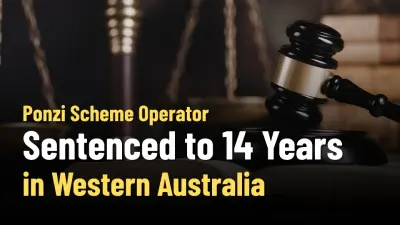简体中文
繁體中文
English
Pусский
日本語
ภาษาไทย
Tiếng Việt
Bahasa Indonesia
Español
हिन्दी
Filippiiniläinen
Français
Deutsch
Português
Türkçe
한국어
العربية
Three Reasons Why US Markets Thrive in Prolonged Fed Hold
Abstract:The surprising resilience of US financial markets under prolonged high Fed rates reveals three unique factors mitigating systemic risks.

The US financial markets have exhibited astonishing resilience in the face of the Federal Reserve's most prolonged period of high interest rates in more than four decades, in an extraordinary turn of events. Markets are proceeding without substantial disruptions, despite concerns that these “restrictive” policies, as Chair Jerome Powell has referred to them, could potentially undermine the economy. The following are three critical factors that elucidate the difference between this period and others, as well as how these elements contribute to a stable financial landscape.
1. The Privatization of Risk
The financial ecosystem has undergone a substantial transformation to the extent that risk is increasingly privatized. In contrast to the public market collapses of 2000 and 2007, which were visible to all and precipitated widespread hysteria, a significant portion of today's financing takes place in the shadows. Private entities, including pension funds, endowments, family offices, and ultra-wealthy individuals, are now more prominently involved in lending, circumventing the stricter regulations that govern public financial institutions.
This trend indicates that the likelihood of immediate contagion regarding prospective issues within the financial system is reduced. For instance, herd behavior that frequently results in market collapses is prevented by the fact that missed interest payments by private entities do not generate public headlines. Additionally, the risk of precipitous financing stops is mitigated by the relatively low likelihood of investors in private credit funds, including pension funds and insurance companies, to abruptly terminate their investments.
Nevertheless, this privatization is not without its own set of associated hazards. The potential for lower underwriting standards and the opacity of the private credit market has been emphasized by the International Monetary Fund (IMF) in response to the increased pressure to finalize transactions. In the event of a substantial market decline, there are concerns regarding the “layers of leverage” that exist within this ecosystem, which could potentially compound disruptions.
2. The Growth-Powered Government Debt
An additional distinctive feature of the current financial stability is the function of government debt in driving economic growth. Federal spending is a substantial contributor to the current period, in contrast to previous expansions that were fueled by corporate or household borrowing. In 2023, government expenditure was the primary source of GDP growth, with the highest percentage in over a decade, primarily funded by debt.

Inherently less hazardous than private debt, government debt is generally regarded as secure due to the federal government's capacity to tax. Unfortunately, the costs of this borrowing are on the rise, and there are concerns regarding the fiscal trajectory's sustainability. Although these concerns are valid, it does not appear that the current level of debt has yet reached a critical threshold that would result in a substantial increase in yields and the destabilization of the economy.
3. Fed's Balanced Approach
Maintaining market stability has also been significantly influenced by the Federal Reserve's strategy for managing elevated interest rates. Despite the fact that the Federal Reserve has implemented vigorous rate hikes and reduced its bond portfolio, it continues to exhibit a high degree of sensitivity to potential negative outcomes. Exemplifying this vigilance is the central bank's prompt intervention during the collapse of Silicon Valley Bank in March 2023.
Strategic communication by the Federal Reserve has been instrumental in mitigating market volatility and ameliorating financial conditions. This has necessitated a meticulous equilibrium: the preservation of a “tight” monetary policy while preventing the economy from spiraling into recession. In spite of the elevated interest rates, the Federal Reserve's interventions and signaling have maintained relatively benign financial conditions, thereby averting substantial fluctuations.
In spite of this, the Federal Reserve's capacity to oversee all facets of the financial system is restricted. Particularly in sectors with less regulatory supervision, such as fintech lending, and among low-income households, high interest rates have generated tension. Prolonged high rates have yet to completely test the resilience of the broader financial system and consumer markets.

In summary,
To conclude, the current stability of the US financial markets, despite the protracted high interest rates, can be attributed to a combination of factors. Within the opaque domains of private credit markets, the privatization of risk has served to mitigate potential contagions. Government debt has been instrumental in maintaining economic expansion, despite the increasing apprehensions regarding fiscal sustainability. Finally, the Federal Reserve's strategic communication and balanced approach have facilitated the management of market expectations and the diminution of potential downturns. Although these components have thus far maintained market stability, the inherent risks and potential stress points indicate that it is imperative to exercise caution when navigating this unprecedented economic environment.
You may access the financial latest news here.

Disclaimer:
The views in this article only represent the author's personal views, and do not constitute investment advice on this platform. This platform does not guarantee the accuracy, completeness and timeliness of the information in the article, and will not be liable for any loss caused by the use of or reliance on the information in the article.
Read more

Uniglobe Markets Bonus Review: Understanding the Offers and Uncovering the Risks
Many traders start looking for a new broker by searching for special deals and bonuses. The phrase "Uniglobe Markets no deposit bonus" is something people often search for. Let's address this question clearly and directly. Based on all the information we have, Uniglobe Markets does not currently offer a no-deposit bonus. Instead, this broker focuses on bonuses that require you to deposit your own money first. To get any bonus credits, traders must put in their own capital. Read on to learn how this entire bonus works out for traders.

PINAKINE Broker India Review 2025: A Complete Guide to Safety and Services
As online trading grows in popularity, Indian traders are always looking for brokers that offer good deals and fair conditions. PINAKINE has become one of these companies, getting attention by promising high leverage and many different account options. This broker, officially called Pinakine Liquidity Limited, has been operating for about one to two years and has made many people curious. Traders want to know the answer to the most important question: Is PINAKINE a real and safe place to invest money, or are there hidden dangers behind its attractive offers? Read on to know the answer.

Is Amillex Safe or a Scam? Understanding Rules and Security
You are asking an important question: Is Amillex safe or a scam? The simple answer is that Amillex works in an unclear area that needs careful study. It is not a complete scam like fake websites that steal your money right away, but it also does not meet the safety rules of the best, well-regulated brokers. Read on to explore more details.

Ponzi Scheme Operator Sentenced to 14 Years in Western Australia
Chris Marco, a Ponzi scheme operator, was sentenced to 14 years for a $34 million investment fraud in Western Australia. Read about the case and its impact.
WikiFX Broker
Latest News
Is Nash Markets Regulated or Risk? Truth About Nash Markets’ License & Withdrawal Issues
Webull Widens Crypto Futures with Coinbase Derivatives
Latest FCA Daily Alerts and Consumer Warnings for 2025
CySEC Blocks Certification Access to Combat Advisor Impersonation
Angel one 2025 Review & Complaints
Exclusive Markets Under the Scanner: Traders Report High Swap Charges, Deposit Discrepancies & More
Voices of the Golden Insight Award Jury - Simon So, Chief Experience Officer of Hantec Financial
PINAKINE Broker Review: A Complete Look at Its Services and Risks
Pinched By Penny Shortage, US Retailers Beg Congress To Step In
PINAKINE Broker India Review 2025: A Complete Guide to Safety and Services
Currency Calculator



